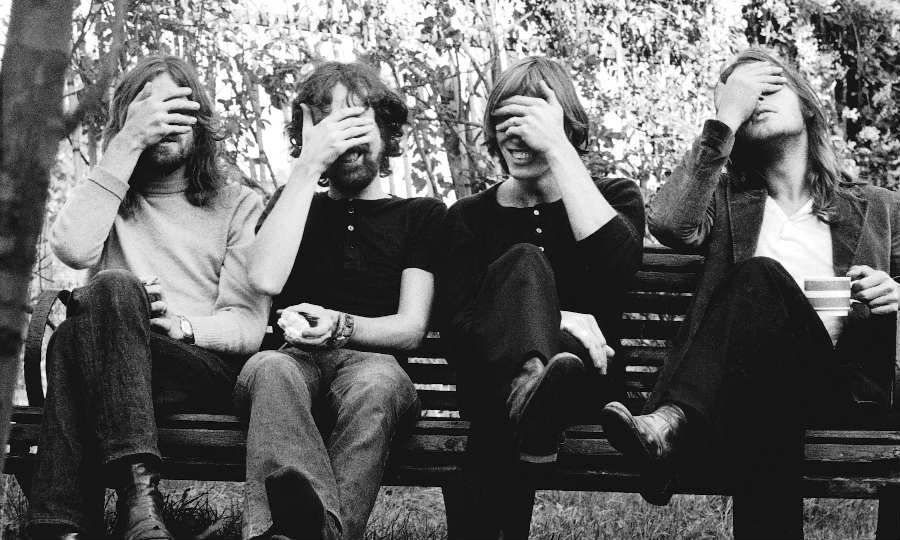On Nov 7, 1969 Pink Floyd released Ummagumma, one of the most experimental and avant garde albums of all time. Reeling from the loss of their frontman and evident mastermind Syd Barrett, Pink Floyd bravely explored the most otherworldly, sonic territories their minds could possibly conceive.
Without Syd Barrett there would be no Ummagumma. His sheer determination to digest new and uncharted territory led to Pink Floyd’s most experimental statement. While it can often be disregarded as unidirectional noise, Ummagumma has Barrett written all over it and encompasses the whole gamut of Floyd’s many flavours.
50 years to the day we reflect on the making of Pink Floyd’s transitional masterpiece Ummagumma, and the ripples of it’s legacy.

A sonic palette of Pink Floyd’s many faces, Ummagumma marks the outfit at their experimental, transitional best, as they forge the page paved by Barrett.
Live Recordings
After the departure of Syd Barrett, Pink Floyd split into four parts. They tried to write an album, not as a cohesive unit but rather as four individual artists attempting to wrangle their illuminating, genius tendencies. The result is a somewhat misguided and utterly creepy collage of highly experimental rock.
The first half is a live album easily the most enjoyable part of the record. Recorded at Mothers Club, in Birmingham’s Erdington suburb. The floating ethereal synths, eerie falsettos and driving drum beats express the bands immense talent as a live band. Adding several movements to older songs, the versions of Saucerful of Secrets and Astronomy Domine build slow and swaying, peaking towards the end of the movement before trickling down again.
Even Saucerful Of Secrets is better than the original. Clocking in at a whopping 13 minutes it never grows tiresome. This is discernibly the better half of the album and was an early indicator of the bands palpable chemistry as a live unit.
Thus the second half, written in four isolated parts by each member, is a non cohesive plunge into the deep dark murk of avant garde.
The studio half of Ummagumma is written in four parts by: Richard Wright, Roger Waters, David Gilmour and Nick Mason so I will divide it as such.
Wright – Sysyphus Pt. 1-4
While Pink Floyd is often perceived as a battle of creatives between Waters and Gilmour, keyboardist Richard Wright never truly gets the chance to shine for his inherent genius.
Inspired by the mythological Greek character who is punished to roll a boulder up a hill for the rest of his life, Sysyphus is typified by classical piano suites to orchestral wonder and ultimately tense, free form noise walls.
The 13 minute measure is split into four parts that mimic the struggles of Sysyphus, climaxing in pitch shifted screams and pounding drums. The first movement of Ummagumma stands as a confounding case for Richard Wright being a musical visionary unto himself. As Roger later confided, “He hasn’t got quite the credit he should have.”
Check out a live version of Careful With That Axe, Eugene below:
Waters – Grantchester Meadows // Several Species of Small Furry Animals Gathered Together in a Cave and Grooving with a Pict.
The pastoral sounds of Grantchester Meadows is a blissful lull in the chaos of Ummagumma before seamlessly flowing into the humorously titled Several Species of Small Furry Animals. Still focused on a dreamy, bucolic landscape, Waters replicates the sounds of woodland animals on crack by speeding up and reversing the tapes of his own voice in various orders and repetitions.
The result is a slightly comical yet equally experimental piece of music with various easter egg’s hidden in the reversed vocals. The funniest of which enters at the end and says “That was pretty avant garde, wasn’t it?”.
Gilmour – The Narrow Way Parts 1-3
David Gilmour’s movement is arguably the directionless concept, though it came together to show signs of the sound that would ultimately define Pink Floyd. Entering the studio with a few various ideas he supposedly ‘bullshitted‘ his way through after asking Waters to write lyrics and being refused.
This led to David Gilmour’s first songwriting attempt for the band and it was successful. Penning his own lyrics, no doubt Barrett inspired, Gilmour sings them perfectly while the guitar playing is gorgeous and fluid.
The synth glissandos and strange studio gimmickry displayed here are techniques that defined later projects like Dark Side Of The Moon and The Wall.
Mason – The Grand Vizier’s Garden Party
The Grand Vizier’s Garden Party is the most successful attempt at an experimental song on the album. Mason endlessly pores through a cycle of altered and enhanced drum and percussion assortments, likely inspiring the intro to Money.
This rare compositional recording from Pink Floyd’s drummer displays the distinct aural wandering that is later showcased in Alan’s Psychedelic Breakfast, which was dotted with the sounds of a roadie actually making a morning meal as well as Seamus, from 1971, featured a friend’s dog howling.
Ummagumma
The fourth studio album from Pink Floyd showcases the band at their experimental, nothing-is-off-limits, peak. While they were brave enough to release any sounds they could get their hands on, there is a level of production and raw creativity here that is still a pleasure to behold and would have surely blown the minds of many a listener in 1969.
The sheer unleashing of creative overflow is a reckoning blow and the live recordings are absolutely exceptional. By tossing random bricks of sound and embodying the eccentric beauty of a madman, Pink Floyd paved the way for their future in Ummagumma, even if it isn’t clear initially.



